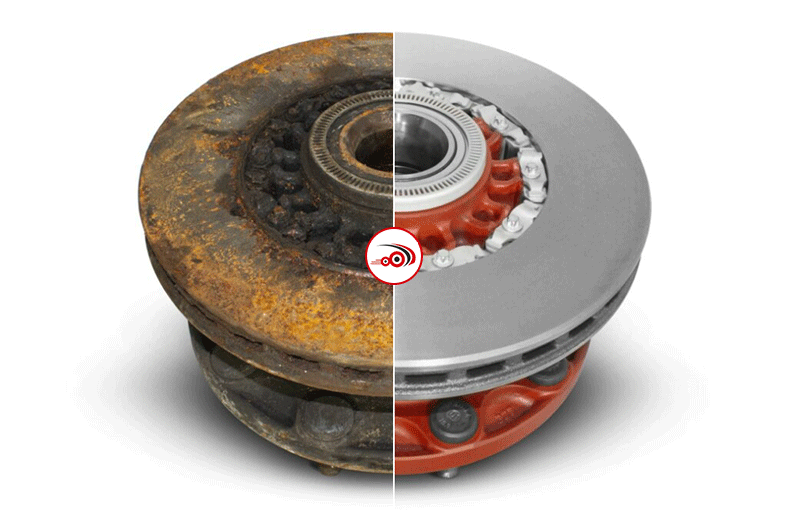
Wheel centre caps are protective covers designed to fit in the centre of wheels on HGVs and other vehicles. Wheel centre hub caps are often seen as purely decorative but they do in fact have a number of purposes, not least helping to protect the wheel hub from corrosion and damage over time. They can be made from a variety of materials but are designed to combine protection with aesthetic appeal.
Why are wheel caps important?
- Wheel centre hub caps provide more than a tidy, coherent appearance on your vehicle’s wheels. They have an essential protective function that is all the more important when it comes to heavy goods vehicles.
- Wheel centre hub caps help to protect the wheel hub and the centre of the wheel from dirt, debris and other contaminants. This is particularly important for large commercial vehicles that are exposed to a wide range of road and weather conditions. Wheel centre caps reduce the build-up of potentially damaging contaminants which can cause corrosion.
- Wheel centre hub caps give your vehicle’s wheel a more finished look while providing protection from some of the challenges associated with driving in a variety of conditions.
What happens when a wheel centre cap falls off?
Over time, wheel centre hub caps can become loose and may eventually fall off. This can be prevented by monitoring the conditions of your wheel centre hub caps for signs of wear and tear and excessive movement. Your wheel hub caps should be replaced before they reach the stage where they break or will no longer be secured in place. If a wheel centre hub cap does fall off in transit, then it can present an immediate road hazard which is the key reason why loose wheel centre hub caps should be rectified or replaced. Without the wheel hub cap in place, certain components such as the wheel hub, the axle and lug nuts may become exposed. This exposure makes them more vulnerable to dirt, debris and other contamination potentially leading to corrosion and other damage. Exposed wheel components will also require more frequent maintenance and cleaning, particularly with a large commercial vehicle in heavy use in a range of conditions. While a missing wheel centre hub cap is not a direct safety hazard it can indicate that the wheel has been tampered with and its components may not be properly secured. Before replacing a missing wheel centre hub cap it’s important to verify the overall condition of the wheel and its components.
Can you drive without wheel centre caps?
A wheel centre hub cap is not a key component of your vehicle and a missing cap won’t impact immediately on how your vehicle drives. However, it’s important to remember that a wheel centre hub cap has an important protective role. Without a cap your wheel hub and other components will be exposed to a greater range of road and weather conditions, ultimately leading to potential damage. Wheel centre hub caps can extend the service life of your wheel hub components. In some cases, wheel centre hub caps are designed to reduce noise and increase the aerodynamics of an HGV wheel. When you don’t have wheel centre hub caps in place the noise generated by your vehicle in transit may increase.
Replacing your wheel centre caps
Replacing wheel centre hub caps is a relatively simple process. After carefully removing the old wheel centre hub cap, you should then clean your wheel where the centre cap is attached. Take care to remove any dirt, debris and other materials. Inspect your new wheel centre hub cap to make sure it has no visible signs of damage and is the correct size for the vehicle. Align the wheel centre hub cap with any openings or tabs where the cap is to be fixed. Apply even pressure to the wheel centre hub cap, pressing firmly into the wheel. You should feel or hear a clicking sound when it has been attached into place. Once it’s in place gently tug at the wheel centre hub cap to ensure it is properly secured.
Your Wheel Hub Specialists
At CV Hubs & Bearings, we’re specialists in all things HGV wheel hubs. Our experienced team is always on hand to answer any questions you may have.
Contact us to find out more about our services
Back to news

